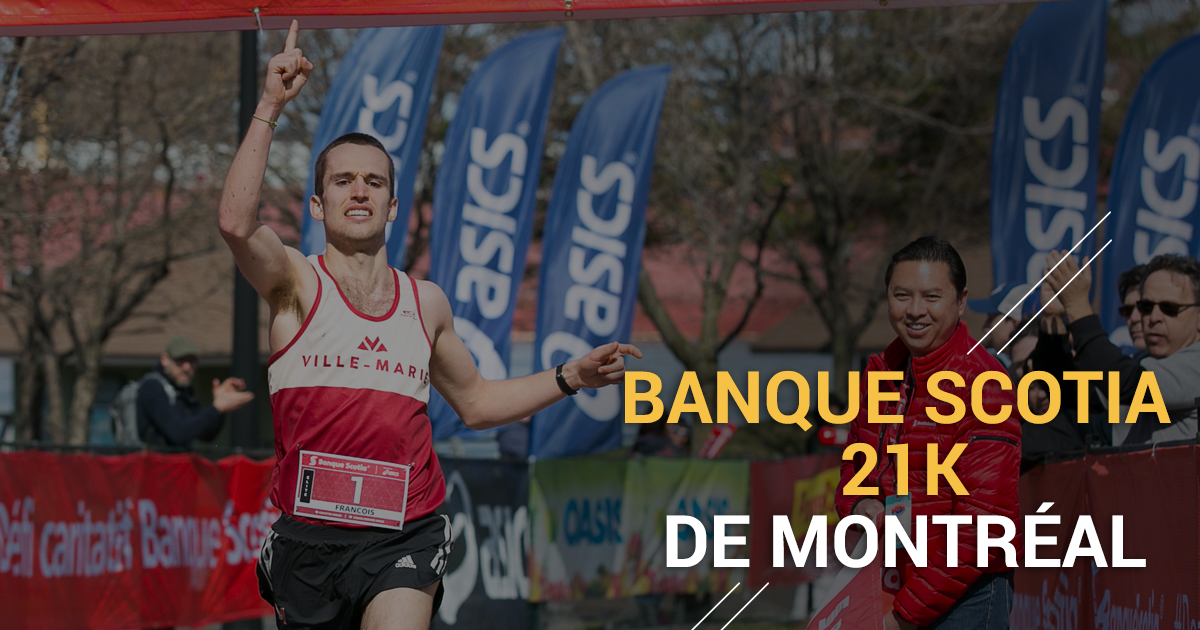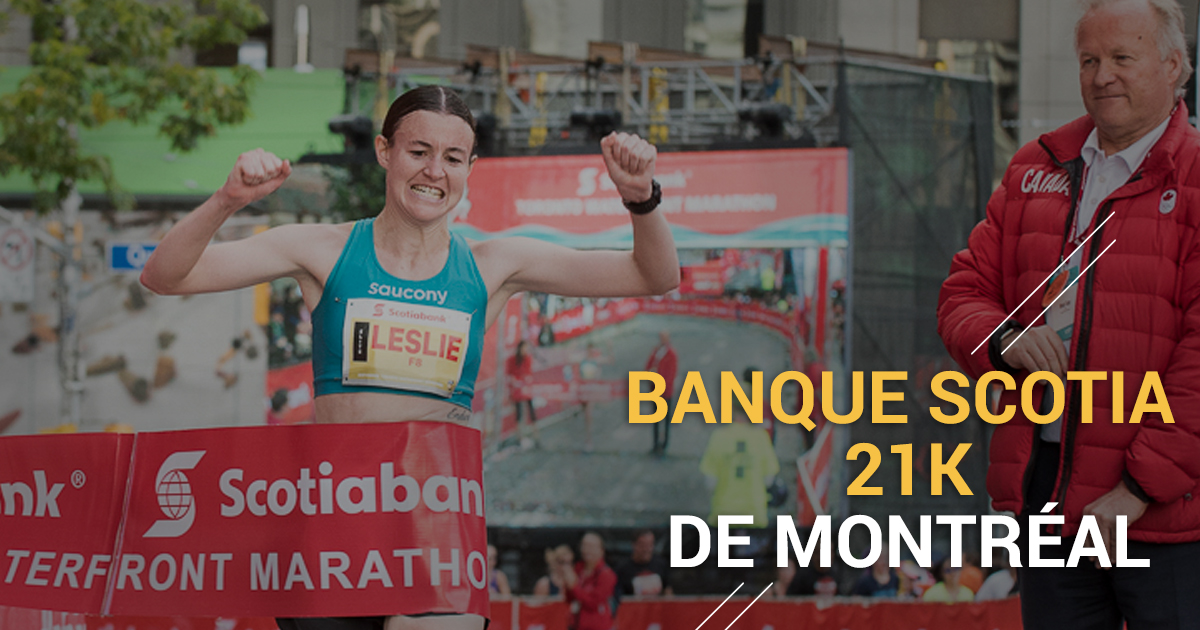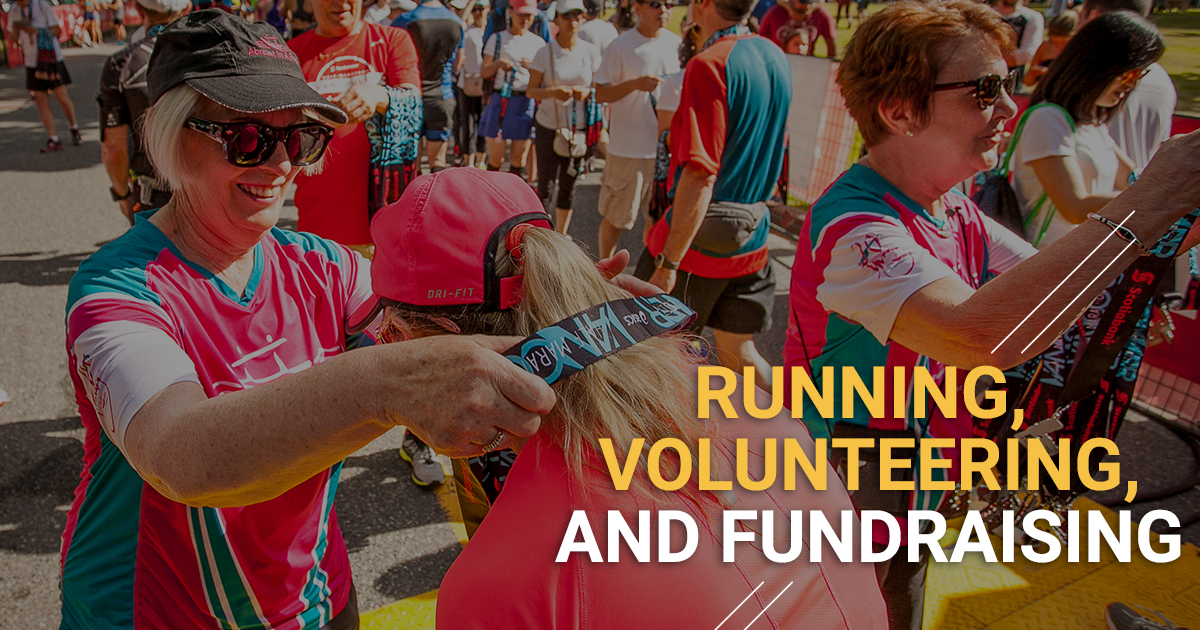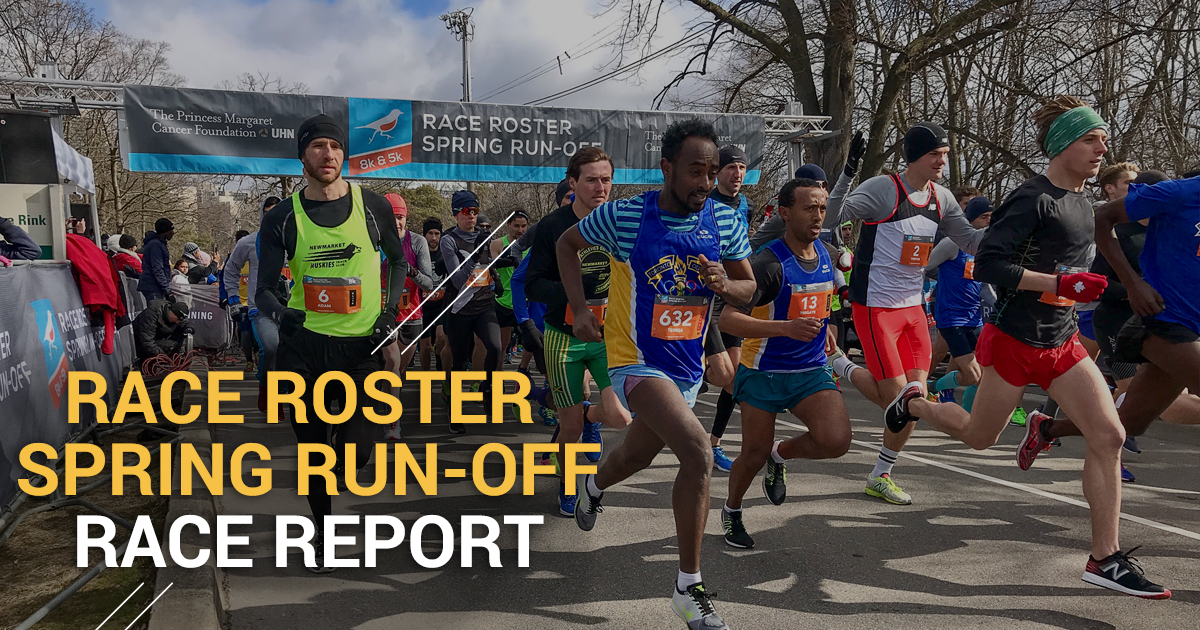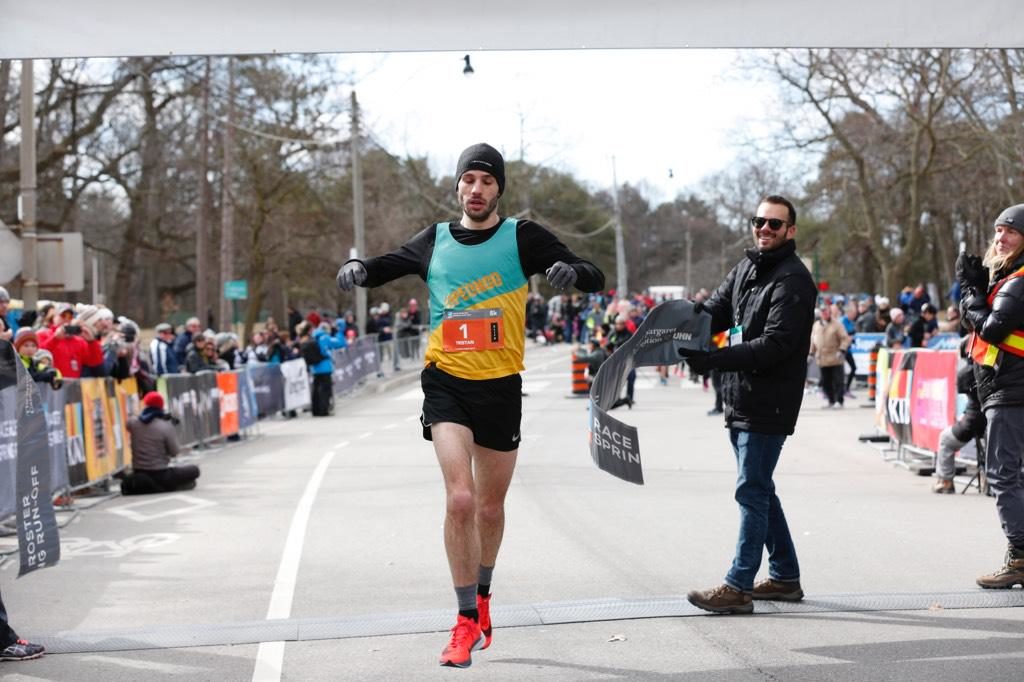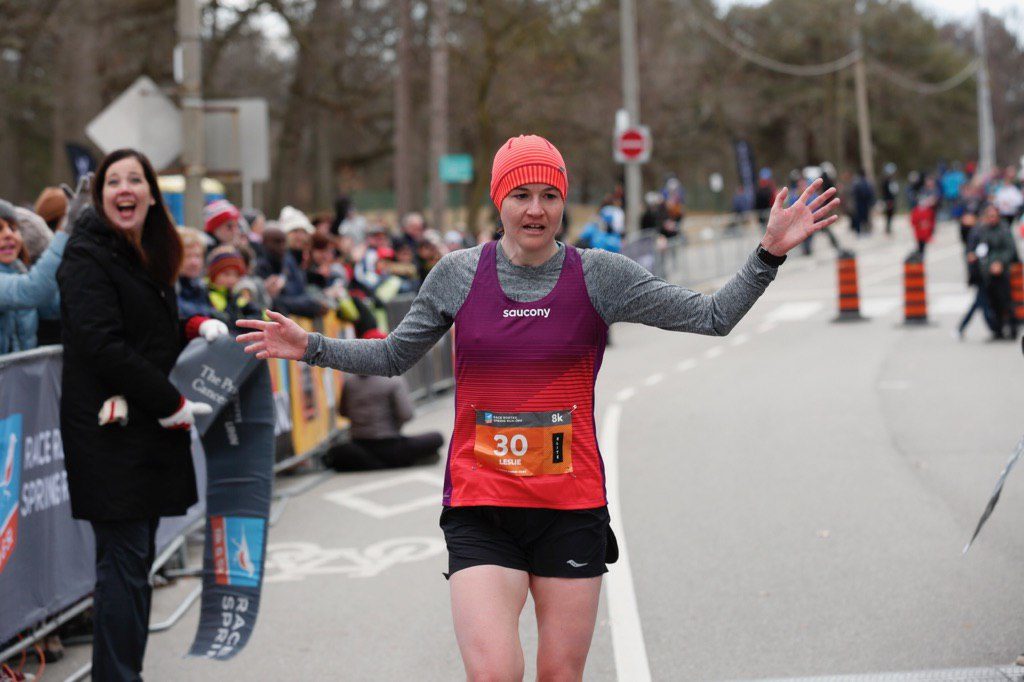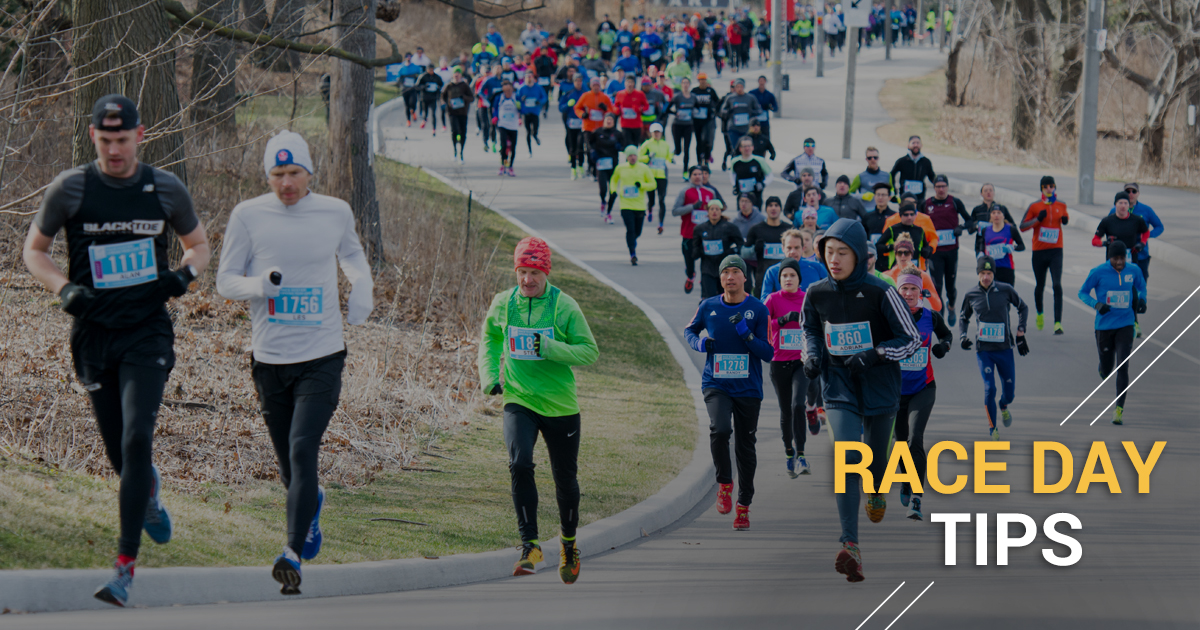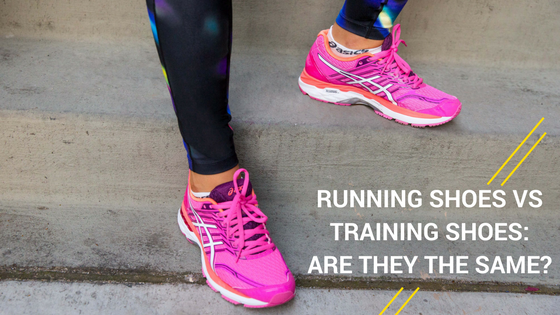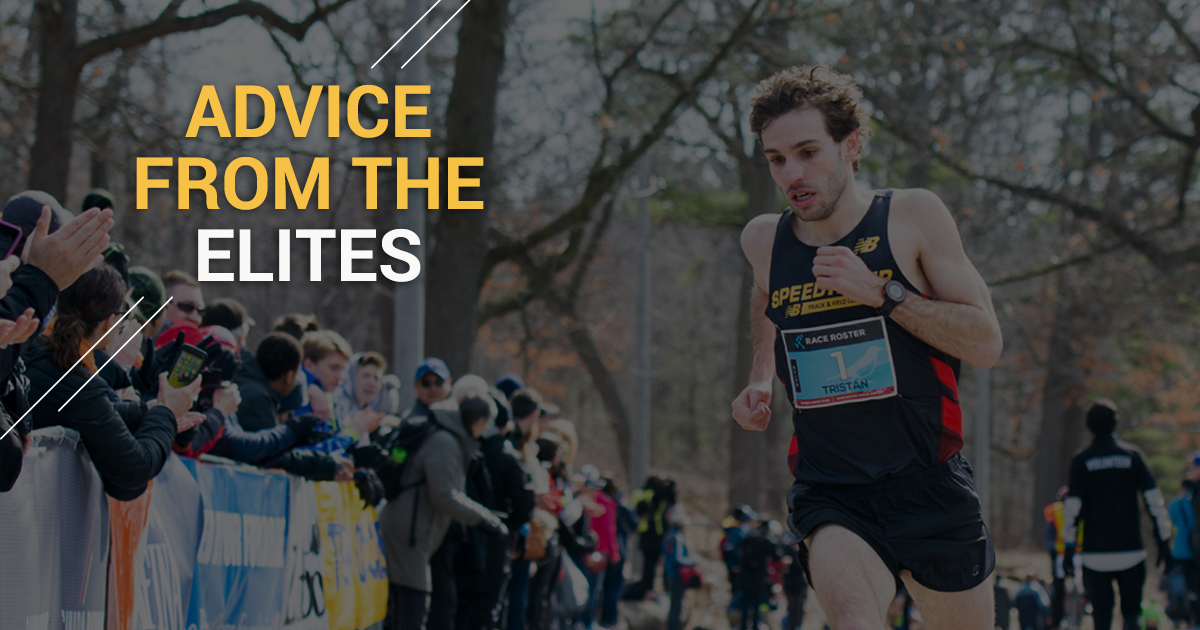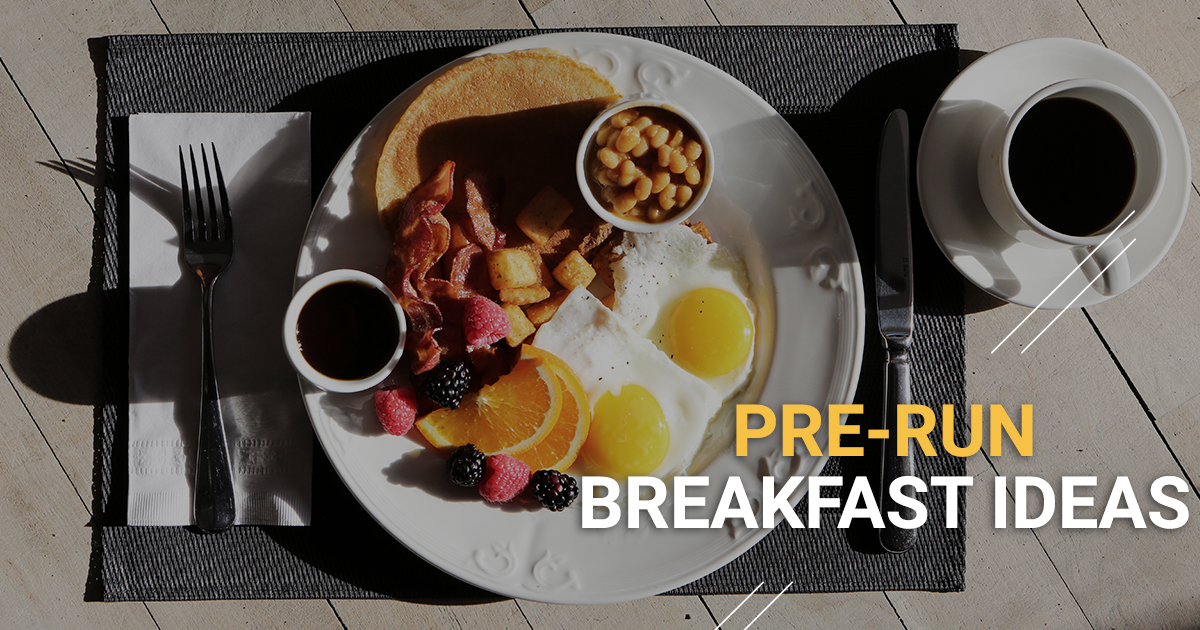
Par Laurent Godbout
Montréal (22 avril) – Profitant de conditions atmosphériques idéales au départ, les coureurs ontariens Tristan Woodfine, chez les hommes, et Sasha Gollish, chez les dames, ont remporté des victoires sans équivoque dimanche au Parc Jean-Drapeau de Montréal, pour la 16ème édition de la Banque Scotia 21k de Montréal.
Woodfine, 24 ans, de Cobden, Ontario, franchissait la ligne d’arrivée située aux abords du bassin d’aviron olympique en 1h05min43s. Gollish, 36 ans, de Toronto, remportait l’épreuve féminine en 1h16min14s.
Woodfine en contrôle
Dès le départ, Woodfine partait doucement avec le groupe de favoris parmi lesquels on retrouvait le champion en titre de 2017 François Jarry, l’Albertain Kip Kangogo, Baghdad Rachem, Jacques-Sylvain Lecointre et Adam Hortian, de Kitchener.
Le petit peloton de six coureurs s’est rapidement étiré et dès le 5ème kilomètre passé en 15:53, Woodfine menait, accompagné de Jarry et Kangogo. Accumulant des kilomètres à une moyenne de 3:06-3:07, les trois meneurs passaient les 10km en 31:30. Woodfine était visiblement le plus à l’aise, tandis que Jarry, à 30 secondes de son meilleur chrono sur route, grimaçait déjà.
Pendant ce temps, le peloton féminin, entouré de quelques coureurs masculins, était déjà réduit à trois athlètes, soit Anne-Marie Comeau, de St-Férréol-les-Neiges, et les Torontoises Sasha Gollish et Laura Desjardins. On avait vu au départ Leslie Sexton, une des favorites, mais la coureuse de London abandonnait dès le 2ème kilomètre.
Pendant que Gollish pratiquait quelque peu son français avec les «boys» qui l’entourait, Comeau, à sa première tentative sur la distance de 21,1 km, était à la tête du groupe qui franchissait les 10 kilomètres en 36 :38. À quelques mètres derrière, Desjardins ne semblait plus capable de tenir la cadence imposée par les meneuses. Très à l’aise, Gollish nous a semblé au beau milieu d’une longue séance d’entraînement!
Les choses se sont rapidement précipitées pour tout le monde entre le 10ème et le 14ème kilomètre. Pendant que Woodfine maintenait le rythme en enfilant des kilomètres en 3 :07, Jarry était décroché et accusait un retard de 28 secondes au 15ème tandis que Kip Kangogo suivait à 75 secondes du meneur. Au 4ème rang, Adam Hortiam pouvait bien voir Kip devant lui mais n’a jamais pu le rattraper.
On peut affirmer sans l’ombre d’un doute, avec ce chrono de 1h05m43s, que Woodfine en avait encore pas mal sous le pied et qu’il aurait certainement pu améliorer son record personnel (1h05m28s) s’il avait été poussé. Jarry, deuxième en 1h07m28s, conserva une avance importante sur Kangogo, 3ème en 1h08m15s.
«J’ai pris un bon départ, expliqua Woodfine à l’arrivée. Je me suis placé 3ème au début mais dès le 4ème kilomètre, je voulais voir qui pourrait me suivre. À partir de là, on avait déjà creusé un petit écart. Au 10km, je me sentais bien et j’ai poursuivi mon effort. J’étais un peu surpris de voir que Kip (Kangogo) n’était plus là. C’est un bon coureur et il a eu un hiver très difficile en Alberta. Je suis certain qu’il reviendra plus fort bientôt.»
Jarry était relativement satisfait de sa course. «Woodfine a fait une bonne course et il était plus fort aujourd’hui. Comme j’ai été malade autour de Pâques, je ne savais pas trop comment ça allait se passer. Considérant tout ce qui n’allait pas bien, c’est quand même un PB et je n’aurais pas pu demander plus.»
Jarry a bien tenté de demeurer près de Woodfine, mais ce dernier a lancé une attaque qui a fait mal à partir du 12ème kilomètre. «Autour de 12-13km, on s’en allait dans un vent de face et c’est là que ça faisait le plus mal, dit encore Jarry. À ce moment-là, je ne pouvais pas répondre et j’ai commencé à cramper. J’ai essayé de revenir sur lui vers le 15ème mais il était trop tard.»
Un résultat de bon augure pour Jarry, qui prévoit courir son premier marathon à Toronto l’automne prochain. Pour Woodfine, il s’agissait d’une dernière course avant le marathon d’Ottawa. «Ce résultat est une bonne indication qu’on est sur la bonne voie. J’ai bien aimé le parcours. Il y avait quelques virages où je me suis efforcé d’accélérer pour prendre un avantage. Je veux juste poursuivre mon entraînement pour Ottawa avec encore quelques semaines solides et ensuite diminuer à l’approche de la course.»
Gollish s’amuse
Gollish s’est montrée plus patiente et donna le coup de grâce en fin de course, terminant sous les applaudissements nourris en 1h16m14s, devançant Comeau par 11 secondes. Desjardins réussit à conserver la 3ème place pour terminer en 1h17m59s.
Coureuse parmi les plus polyvalentes au Canada, elle était de très bonne humeur à l’arrivée. «Je me sentais fatiguée en arrivant ici après un gros entraînement avant-hier. Je ne me suis pas entraîné hier et je voulais juste avoir du plaisir. Je suis demeuré dans le sillon du groupe et j’ai essayé de m’amuser tout au long de la course.»
Ce besoin de détente était bien évident avant le départ puisque Gollish parlait avec tous les coureurs à la ligne de départ. «Il ne faut pas sous-estimer l’importance du relâchement dans une course. Si on peut rendre l’effort moins pénible en relaxant, je crois que ça peut conduire à un meilleur résultat. J’aime bien avoir du plaisir en course.»
Loin d’être à la recherche d’un gros chrono, Gollish a abordé l’épreuve comme un long tempo. «Mon français est terrible, je comprends un peu mais je me suis pratiqué un peu. J’ai essayé de faire ma petite affaire.»
Gollish a maintenant des ambitions sur la distance du marathon. «Je vais quand même tenter de courir un 5000 mètres sur piste en mai. Le plan sera ensuite vers un marathon à l’automne, probablement à Berlin.»
Sans exception, tous les coureurs ont apprécié le parcours. Gollish a bien résumé le sentiment des athlètes. «Loin des voitures, dans ce grand parc, on était vraiment bien.»
Woodfine and Gollish Big Winners in Montreal
By Laurent Godbout
Montreal (April 22) – Taking advantage of ideal weather conditions at the start, Ontario runners Tristan Woodfine and Sasha Gollish won unequivocal victories on Sunday at Parc Jean-Drapeau in Montréal for the 16th edition of the Banque Scotia 21k de Montréal.
Woodfine, 24, of Cobden, Ont., crossed the finish line at the edge of the Olympic rowing basin in 1h05m43s. Gollish, 36, of Toronto, won the women’s event in 1h16min14s.
Woodfine in control
From the start, Woodfine was with a small group of favorites, including defending champion François Jarry from Montréal, Alberta’s Kip Kangogo, Baghdad Rachem, Jacques-Sylvain Lecointre and Adam Hortian of Kitchener. The small pack of six runners quickly spread out and passed 5 kilometres in 15:53, where Woodfine took the lead, followed by Jarry and Kangogo. Maintaining an average pace of 3:06-3:07/km, the three leaders passed 10km in 31:30. Woodfine was obviously the most comfortable, while Jarry, 30 seconds off his best time on the road, was already wincing.
Meanwhile, the women’s lead group, surrounded by a few male runners, was already reduced to three athletes, namely Anne-Marie Comeau, of St-Férréol-les-Neiges, and Toronto’s Sasha Gollish and Laura Desjardins. Leslie Sexton, one of the favorites, was seen at the start, but the London runner gave up near the second kilometer.
While Gollish was practicing her French conversation with the “boys” around her, Comeau, at her first attempt at the 21.1 km distance, was leading the group, passing 10 kilometers in 36:38. A few meters behind, Desjardins no longer seemed able to maintain pace with the leaders. Looking very comfortable, Gollish seemed to be in the middle of a long workout!
Things changed quickly for everyone between kilometers 10 and 14. While Woodfine kept a 3:07/km pace, Jarry was slowly letting go and was 28 seconds behind at 15km, while Kip Kangogo fell to 75 seconds behind the leader. In 4th place, Adam Hortian could see Kip in front of him but was unable to catch him.
Beyond a shadow of a doubt, with his winning time of 1:05:43, Woodfine still had a lot left in his legs and could certainly have improved his personal best (1:05:28s) if he had been pushed. Jarry, second in 1:07:28, kept a significant lead over Kangogo, 3rd in 1:08:15.
“I had a good start,” Woodfine said less than a minute after he finished. I positioned myself in 3rd place at the beginning but from the 4th kilometre on I wanted to see who could follow me. From there, we had already dug a small gap. At 10km, I felt good and I continued my effort. I was a little surprised to see that Kip was no longer there. He is a good runner and has had a very tough winter in Alberta. I’m sure he’ll come back to his best soon. ”
Jarry was relatively happy with his race. “Woodfine had a good race and he was stronger today. As I was sick around Easter, I did not really know how it was going to be. Considering all that went wrong, this is still a PB for me and I could not have asked for more.”
Jarry tried to stay in close range of the leader, but Woodfine launched an attack that hurt from the 12th kilometer. “Around 12-13km, we went in a headwind and that’s where it hurt,” said Jarry again. At that moment, I could not respond and started to cramp. I tried to get back to him around 15km but it was too late.” Overall, it was a positive result for Jarry who plans to run his first marathon in Toronto next fall.
For Woodfine, this was his last race before the Ottawa Marathon. “This result is a good indication that we are on the right track. I enjoyed the course. There were a few bends where I went hard to accelerate and take advantage. I just want to continue my training for Ottawa with a few solid weeks and then decrease as the race approaches.”
Gollish relaxed and having fun
Sasha Gollish crossed the finish line looking relaxed and patient, throwing a final knockout punch near the end of the race. Finishing to loud cheers from the crowd in 1:16:14, she edged Anne-Marie Comeau by 11 seconds. Laura Desjardins managed to stay in 3rd place to finish in 1:17:59.
This was an impressive result from Comeau on her first attempt at the distance. The 21 year old Olympic cross-country skier ran without much knowledge of her abilities for the half marathon and was quite satisfied with the result.
One of the most versatile runners in Canada, Sasha Gollish was in a very good mood upon arrival. “I felt tired coming here after a massive training the day before yesterday. I did not train yesterday and I just wanted to have fun. I stayed in the groove of the group and tried to have fun all along the race. ”
This sense of calm was obvious before the start as Gollish spoke with all the runners at the starting line. “We must not underestimate the importance of relaxation in a race. If we can make the effort less painful by relaxing, I think it can lead to a better result. I like having fun in the race. ”
Far from looking for a fast time, Gollish approached the race like a long tempo run. “My French is terrible, I understand a bit, but I practiced a little. I tried to stay focused on my business. ”
Gollish now has ambitions for the marathon. “I will still try to run a 5000 meter track in May. The plan will then be geared towards a marathon in the fall, probably in Berlin. ”
Without exception, all the elite runners appreciated the course. Gollish pretty much summed up the feelings of the group. “Far from cars, in this big park, it felt really good.”
For full race results, visit: https://bit.ly/2pPsK0n


